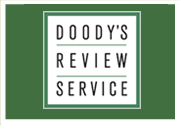|
Editor’s Note: This article is based on the poster Assessing Collection Diversity: Building Inclusive Care presented at the Medical Library Association | Special Libraries Association 2023 Conference.
Diversity is a core principle in a library's commitment to ensuring equal access for everyone, and “to include diversity in programs, activities, services, professional literature, products, and continuing education must be ongoing and encouraged” (American Library Association, 2015). This notion can be employed within libraries using various tools to assess diversity, equity, and inclusion (DEI) efforts. An audit tool, for example, can evaluate critical DEI aspects like cultural awareness, organizational values, collection and service enhancement, and organizational dynamics, offering actionable steps for improvement (Bright & Larkin, 2022).
In collection development, an audit tool process aids in identifying, acknowledging, and ideally, addressing gaps in the collection, facilitating patrons' access to a diverse range of perspectives (Fuller-Gregory, 2022). For instance, a diversity audit provides a tangible inventory and reveals areas needing improvement within a collection. It yields concrete data, helping libraries move beyond a collection primarily representing white heterosexual non-disabled males, thus addressing these gaps (Jensen, 2018).
From a health sciences library standpoint, this means taking a hard look at the reference guides, textbooks, and other materials that are provided to staff and deciding whether those items promote equitable and inclusive care to the patients served by their organization. In the case of consumer health libraries, an honest assessment is needed to see if the materials and platforms shown to patients actually answer the unique questions they have. That is the beauty of a diversity audit: it can be utilized in and adapted for multiple situations across many specialties.
Applying a diversity audit also creates action items individualized to the facility and the needs of the patrons. These action items can include evaluating and revising collection development policies, collection promotion activities, or simply reframing how resources are viewed during the discovery and selection process.
Having a formal collection development policy that explicitly states the goal of creating an inclusive and diverse collection will align with the American Library Association (ALA) Strategic Directions update (American Library Association, 2015). An updated collection development policy with targeted strategies and goals provides the foundation for selecting and identifying resources that encompass the variety of any given population we serve.
Collection promotion activities mean more than showcasing resources during a given month to celebrate. Purchasing resources to fill a specific identified gap and then promoting the access and availability of those resources to focused and broad groups is one way to achieve that next-level action step. Examining accessibility to information and promoting the different access methods to meet people where they are is another way. This may require the extra step of comparing your collection audit to a local demographic survey or census.
The simple step of reframing one’s thoughts during the discovery and selection of new items may look like an old checklist: currency, quality, readability, and audience. But one may also add new questions such as these:
-
Do the instructional case studies identify different cultural groups?
-
Do the pictures all use people who look the same?
-
Is the resource current enough to have reduced or eliminated biases known to exist in previous materials on this topic?
Adding diversity, equity, inclusion, and accessibility-based questions to that checklist can start to change what materials get reviewed for inclusion. Moreover, ensuring that the cataloging terms reflect the individual items’ contents and appropriate collections while also meeting current, specific searching needs can fill in gaps with resources a collection already holds.
Libraries serve diverse populations. Each patron has their own story with different lived experiences that shape their needs and desires. For libraries to be fully utilized, they need to be relevant to their communities. A simple yet effective way to assess this is to perform a diversity audit of the library’s collection. Incorporating this practice on a regular basis ensures that a library is routinely holding a mirror up to itself and getting an honest picture of where they are succeeding and where gaps may exist in how their collections represent their users. Diversity audits provide the awareness needed to see where collections stand in relation to patrons’ diverse and complex needs. Putting it to use can only strengthen collection management practices and help patrons know that their libraries truly care about them.
References
American Library Association. (2015, June 28). American Library Association Strategic Directions. https://www.ala.org/aboutala/sites/ala.org.aboutala/files/content/governance/StrategicPlan/Strategic%20Directions%202017_Update.pdf
Bright, K. & Larkin, M. The Diversity Audit: A Thought-Provoking Tool for Academic Librarians | Elsevier. 19 Oct. 2022, https://beta.elsevier.com/connect/the-diversity-audit-a-thought-provoking-tool-for-academic-librarians.
Fuller-Gregory, C. “DEI Audits: The Whole Picture | Equity.” Library Journal, 6 June 2022, https://www.libraryjournal.com/story/DEI-Audits-The-Whole-Picture-Equity.
Jensen, K. “Diversity Auditing 101: How to Evaluate Your Collection.” School Library Journal, 22 Oct. 2018, https://www.slj.com/story/diversity-auditing-101-how-to-evaluate-collection.
Mike. [@thebookwrangler].?(2023, April 07).?Make room?#ontheshelf?for everyone’s story [Photograph]. Instagram. https://www.instagram.com/p/CqwKlnwMGFl/
Photo Credit: Michael Rawls, @thebookwrangler, Instagram post (reused with permission)
Suggested reading
Fischer, R. K. (2023). Automating the Diversity Audit Process. Information Technology & Libraries, 42(3), 1–4. https://doi.org/10.5860/ital.v42i3.16925
Smith, C. (2023). Building Diverse Collections: Options to review print and digital holdings through an inclusive lens. American Libraries, 54(6), 60–61.
Wood, C. (2021). Counting the Collection. Library Journal, 146(5), 26–29.
Gregory, G. M. (2022). EDI Perspectives. Information Today, 39(1), 24.
Mortensen, A. (2019). Measuring Diversity in the Collection. Library Journal, 144(4), 28–30.
DeLooze-Klein, E. (2021). The Importance of Diversity Audits in Library Collections. Pennsylvania Library Association Bulletin, 76(2), 17–18.
Gates, A., McGaughey, A., Mulder, C., & Voels, S. (2022). Using Data From Collection Diversity Audits. Computers in Libraries, 42(9), 15–19.
Course
Evaluating, Auditing and Diversifying Your Collections | Library Journal
Copyright
This is a work of the U.S. Government and is not subject to copyright protection in the United States. Foreign copyrights may apply.
DCT Featured Article January 9, 2024
|
